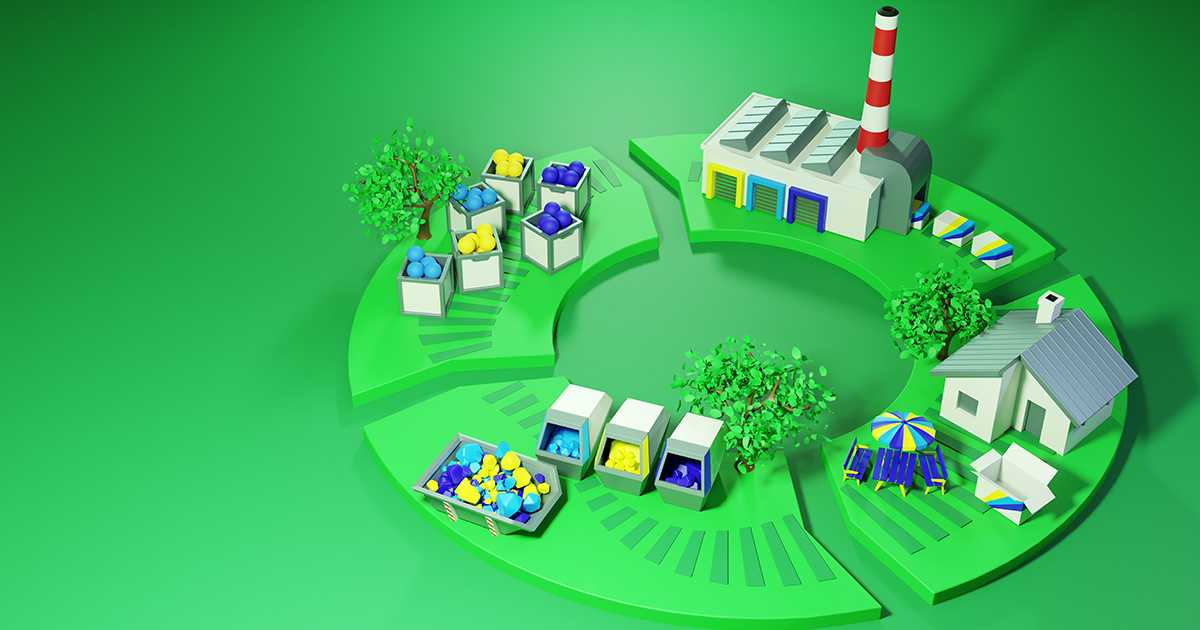Collecting discarded materials to reuse them productively is not only a profitable idea, but also has become a global need and, thus, necessary for our industry in general as the traditional cycle of manufacturing and disposing is an environmental and financial dead-end bringing bigger costs that are impossible to sustain in all aspects.
Until quite recently, supply chains had been working following that simple, one-way, structure: we move raw materials to factories to manufacture products and then distribute those goods and use them until we dispose of them, in a linear structure.
Nevertheless, a new model has arisen as the standard for the future: Circular Supply Chains, returning goods to their manufacturing origin and making the best use of available resources; this brings two major advantages: our actions benefit sustainability, which in turn benefits the whole chain, and a new business opportunity for manufacturers and sellers.
Turning waste into opportunity
Laws and regulations for adequately disposing and recycling waste and manufacturing byproducts have become increasingly, and understandably, stricter. Circular supply chains help us meet these rules while giving us the opportunity to save and get resources.
In a circular supply chain, manufacturers and sellers can recover goods at the end of their life cycles to restore and resell them as either refurbished products or as byproducts or raw materials they can use in their own or others’ manufacturing processes.
This trend is also boosting another equally positive trend: companies are looking for ways to make it easier to recover their products’ components once they get them back and to make them last longer so they can survive more life cycles.
By changing the traditional "in and out" line for a cycle in their supply chains, companies are also lowering costs and reducing the waste they must dispose. Additionally, reusing materials costs less than manufacturing goods from scratch.
In short, contrary to what we may think and despite the initial investment incurred in changing processes, this model turns out to be eventually cheaper.
Great social and financial benefits
Once this model is in place, companies spend less money and use less raw materials – which in turn keeps prices low and avoids shortages. They can also foresee the number of reused materials they need to manufacture new goods so they can budget better, foreseeing expenses more accurately, and keeping costs under control.
It is worth keeping in mind that the price of many categories of raw materials fluctuate constantly, especially metals, which have experienced great volatility recently.
In addition, companies lower their environmental impact (which may give them access to government incentives), reduce exposure to volatility and, above all, increase customer satisfaction by meeting the growing demands clients have for companies protecting the environment.
This is in fact one of the major advantages of embracing the circular model: responding positively to customer demands, who are increasingly aware of the environmental impact of their shopping decisions and more likely to choose products with a smaller environmental footprint. To put a scale to this, according to global data, close to 7 in every 10 consumers are willing to pay more to buy products from sustainable brands.
In other words, companies using this model are not just saving money and creating new income sources, they are also increasing brand value, company goodwill, and market share.
For all these reasons, we can see how circular supply chains will replace linear supply chains within this decade. There are no reasons to reject this model. The circular supply chain is the future.






